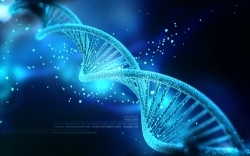Biosphere means sphere of life. These are the environmental conditions in which the earth's animal and plant life takes place. It is the layer of the terrestrial globe inhabited by living beings. It contains the soil, air, water, light, heat and food, which provide the necessary conditions for the development of life.
The biosphere layer is maintained by elements found in the atmosphere, the lithosphere and the hydrosphere. These layers, formed by solid, liquid, gaseous and biological elements, constitute the four layers of the earth.
The biosphere is part of the earth's environments that are interrelated, that is, they are interdependent, but the modification of one of them causes changes in the others and in the whole.
Earth layers
Biosphere - formed by elements found in the atmosphere, the lithosphere and the hydrosphere: air, water, soil, heat, light and food
Atmosphere - gas layer that surrounds the earth. Balances the planet's temperature, contains oxygen, nitrogen and carbon dioxide
Hydrosphere - set of all waters on the planet
Lithosphere - solid layer (rocks and minerals)
The term biosphere was created by geologist Eduard Suess in 1875 and consists of the space populated by living beings. It is included in the scope of the geosphere and is composed of the upper layer of the soil (lithosphere), continental and oceanic waters (hydrosphere) and the atmosphere.
Man, as a living being, is part of the biosphere, interacting with other living beings, sometimes in a harmonic and at other times in an inharmonious way, causing constant damage to the life of the biosphere in general. The devastation of even entire biomes, overfishing, the replacement of natural ecosystems by areas destined for monocultures and livestock, and agribusiness in general transform the biosphere.
The advance of human occupation on the most diverse ecosystems has an impact on the ecological balance. Living beings and the environment establish a dynamic but fragile interaction. The great dilemma of modern societies is to reconcile technological development and the growing shortage of natural resources with the balance of the biosphere.



